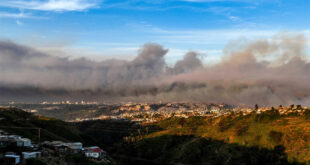The southern metropolis is one of 21 localities that score lowest in a national ranking of transparency in local decision making.
According to the newly-released 2021 Provincial Governance and Public Administration Performance Index (PAPI), Ho Chi Minh City scored 4.99 points on a 10-point scale, placing it among 21 cities and provinces with below-average ratings.
The PAPI’s dimension of Transparency in Local Decision-making is measured by the four sub-dimensional areas of Access to Information, Poverty Lists, Commune Budget and Expenditure Lists, and Local Land Use Planning and Pricing.
Information about government policy and any matter relating to poverty, budgets and land is required to be transparent and made publicly available so citizens can exercise their legitimate rights to know, discuss, and verify, as stipulated by the Grassroots Democracy Ordinance (2007) and legislation, like the Land Law (2013), State Budget Law (2015) and Law on Access to Information (2016).
Of the remaining four centrally run cities, Hanoi leads with 5.93 points, followed by Hai Phong and Da Nang with 5.42 and 5.06. Can Tho City in the Mekong Delta scored 4.6 points.
The transparency score of HCMC last year was the lowest since 2017.
Nationwide, industrial hub Binh Duong Province that borders HCMC scored the highest, 6.25, followed by the central provinces of Thua Thien Hue and Thanh Hoa at 6.2, northern Lang Son Province at 6.04, then Hanoi.
Central Highlands Dak Nong Province ranks last with 4.53 points, following Soc Trang, Kien Giang, Tra Vinh, Ben Tre and Tien Giang provinces in the Mekong region.
The PAPI report showed limited transparency of local land use plans during last year.
Those who said they were informed about local land use plans declined from 18 percent in 2020 to 14 percent in 2021, the lowest since 2011.
Additionally, those who wanted an opportunity to comment on land use plans fell from 27 to 25 percent, marking the lowest rate since 2016.
According to a survey, which included 16,000 respondents, only 29 out of 63 provinces and cities publicly listed land prices on their official portals, and only 337 out of a total of more than 700 district-level administrative units nationwide listed public land use plans online.
In more than 40 localities, only 50 percent of respondents said that the list of budget revenues and expenditures in communes, wards and townships was publicly posted.
Dang Hoang Giang, deputy director of the Center for Community Support Development Studies (CECODES) under the Vietnam Union of Science and Technology Associations, said localities should soon improve their transparency rankings because “that is an important metric for foreign investors to choose a market,” especially the indicator of land use and land prices.
PAPI is a joint collaboration between the CECODES, and the United Nations Development Program in Vietnam since 2009.
From 2009 to 2020, PAPI captured and reflected the experiences of 146,233 citizens.
In 2021, people participated in the PAPI survey through face-to-face interviews or video calls.
- Reduce Hair Loss with PURA D’OR Gold Label Shampoo
- Castor Oil Has Made a “Huge” Difference With Hair and Brow Growth
- Excessive hair loss in men: Signs of illness that cannot be subjective
- Dịch Vụ SEO Website ở Los Angeles, CA: đưa trang web doanh nghiệp bạn lên top Google
- Nails Salon Sierra Madre
 VnExpress News The News Gateway of Vietnam
VnExpress News The News Gateway of Vietnam




